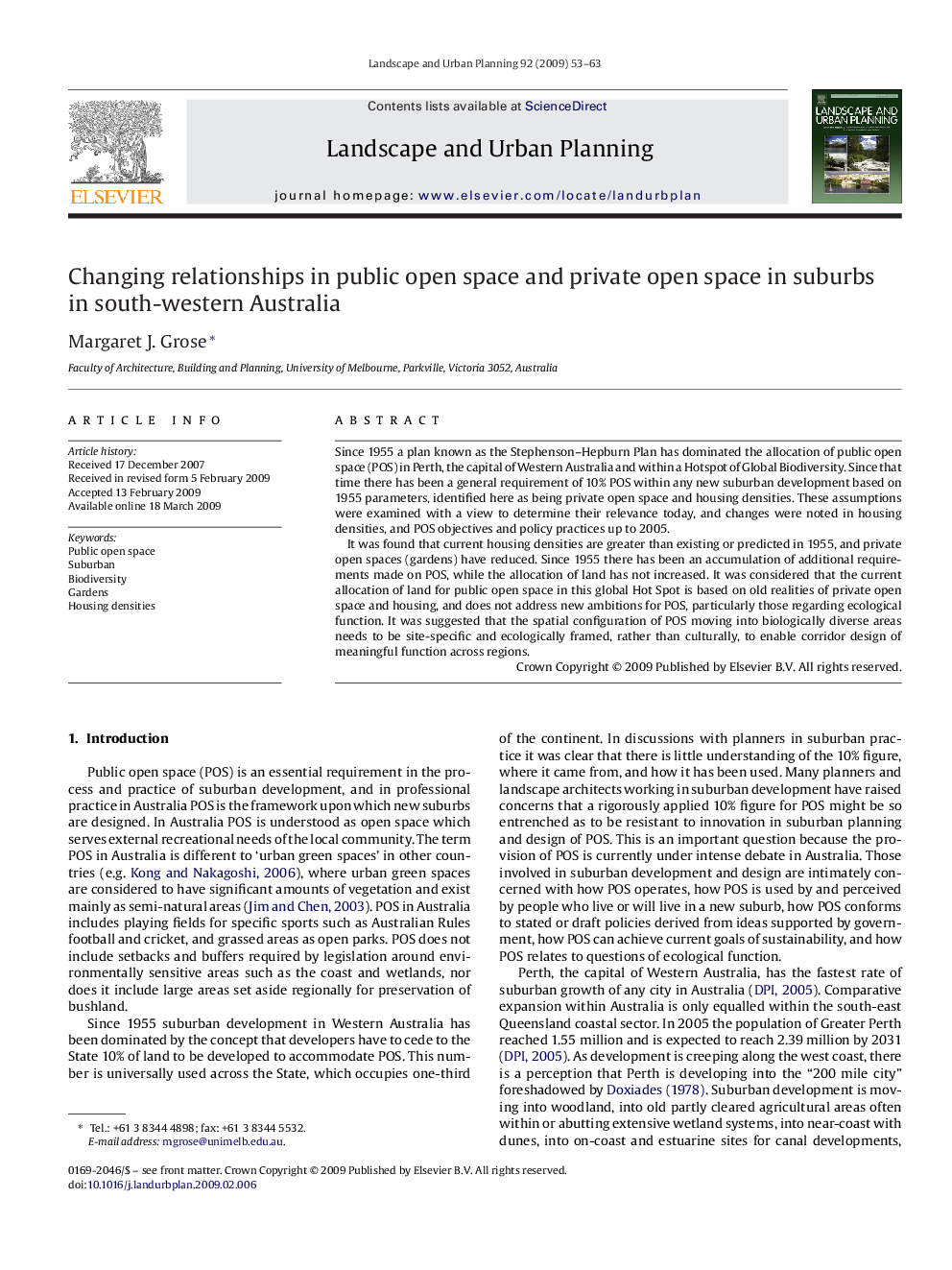| Article ID | Journal | Published Year | Pages | File Type |
|---|---|---|---|---|
| 1049913 | Landscape and Urban Planning | 2009 | 11 Pages |
Since 1955 a plan known as the Stephenson–Hepburn Plan has dominated the allocation of public open space (POS) in Perth, the capital of Western Australia and within a Hotspot of Global Biodiversity. Since that time there has been a general requirement of 10% POS within any new suburban development based on 1955 parameters, identified here as being private open space and housing densities. These assumptions were examined with a view to determine their relevance today, and changes were noted in housing densities, and POS objectives and policy practices up to 2005.It was found that current housing densities are greater than existing or predicted in 1955, and private open spaces (gardens) have reduced. Since 1955 there has been an accumulation of additional requirements made on POS, while the allocation of land has not increased. It was considered that the current allocation of land for public open space in this global Hot Spot is based on old realities of private open space and housing, and does not address new ambitions for POS, particularly those regarding ecological function. It was suggested that the spatial configuration of POS moving into biologically diverse areas needs to be site-specific and ecologically framed, rather than culturally, to enable corridor design of meaningful function across regions.
